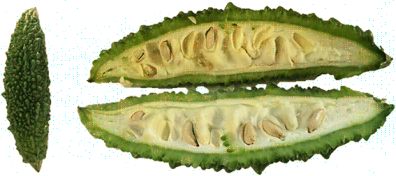Kakarakaya in English
- Kakarakaya‘s English name is “Bitter Gourd“
Kakarakaya in Tamil
- Kakarakaya in Tamil is “Pavakkai“
Kakarakaya in Hindi
- Kakarakaya in Hindi is “Karela“
Kakarakaya in Malayalam
- Kakarakaya in Malayalam is “Pavakka“

Kakarakaya / Bitter Gourd
Kakarakaya, also known as bitter gourd, is a unique vegetable that offers a plethora of health benefits. This green, ridged fruit is commonly used in various cuisines for its distinct bitter flavor and numerous medicinal properties. Despite its acquired taste, Kakarakaya has gained popularity for its ability to promote overall well-being.
Kakarakaya, known as “Pavakkai” in Tamil, is called “Karela” in Hindi and “Pavakka” in Malayalam.
Rich in essential nutrients like vitamins C and K, as well as minerals such as iron and potassium, Kakarakaya is a powerhouse of nutrition. Its low calorie and high fiber content make it an excellent choice for weight management and digestive health. Additionally, Kakarakaya is known for its potential to regulate blood sugar levels and improve insulin sensitivity, making it a valuable addition to the diet of individuals with diabetes.
In this article, we will delve deeper into the world of Kakarakaya, exploring its nutritional profile, health benefits, culinary uses, and ways to incorporate it into your daily meals. Whether you are a fan of its bitter taste or looking to explore new ingredients, Kakarakaya has something to offer for everyone seeking to enhance their health through natural means.
Kakarakaya Cultivation
In terms of cultivation, Kakarakaya thrives in warm and humid climates, making it a popular vegetable in tropical regions. It requires well-drained soil and plenty of sunlight to grow successfully. Farmers often cultivate Kakarakaya for its nutritional value and medicinal properties, making it a staple in many traditional diets.
The cultivation of Kakarakaya varies across regions, with different methods and practices employed to ensure a bountiful harvest. From selecting the right seeds to proper watering and pest control, cultivating Kakarakaya requires attention to detail and expertise. The different varieties of Kakarakaya also play a role in cultivation practices, as each type may have specific requirements for optimal growth.
Overall, Kakarakaya is not just a vegetable; it is a symbol of resilience and adaptability, thriving in diverse environments and providing essential nutrients to those who consume it. Understanding the varieties and cultivation methods of Kakarakaya sheds light on the rich history and cultural significance of this humble vegetable, making it a fascinating subject for exploration in the world of culinary and nutrition.
Kakarakaya’s English Name
Kakarakaya, known as bitter gourd in English, derives its name from its distinct bitter taste and gourd-like appearance. In different English-speaking regions, this vegetable goes by various names such as bitter melon, bitter squash, or bitter apple. These names reflect the shared characteristic of bitterness that defines Kakarakaya across cultures.
Regional variations in naming also highlight the diverse culinary traditions where Kakarakaya is utilized. For example, in some regions, it may be referred to as ampalaya, karela, or pavakkai, showcasing the linguistic and cultural diversity surrounding this vegetable. Despite the differences in nomenclature, the nutritional and health benefits of Kakarakaya remain consistent, making it a valuable ingredient in various cuisines worldwide.
Nutritional Profile of Kakarakaya
One key aspect of the nutritional content of Kakarakaya is its high vitamin and mineral content. It is a good source of vitamins C, A, and E, which are important antioxidants that help protect the body from oxidative stress and boost the immune system. Additionally, Kakarakaya is rich in minerals such as potassium, iron, and magnesium, which play crucial roles in various bodily functions, including muscle function, blood pressure regulation, and energy production.
Moreover, Kakarakaya is a great source of dietary fiber, which is beneficial for digestive health. Fiber helps promote regular bowel movements, prevent constipation, and support a healthy gut microbiome. The presence of fiber in Kakarakaya also aids in maintaining a feeling of fullness, which can be beneficial for weight management.
Furthermore, Kakarakaya contains compounds like flavonoids and phenolic acids, which have been linked to various health benefits, including anti-inflammatory and anti-cancer properties. These bioactive compounds contribute to the overall health-promoting effects of Kakarakaya.
Benefits of Kakarakaya
Kakarakaya, also known as bitter gourd or bitter melon, offers a plethora of health benefits that make it a valuable addition to your diet. From its antioxidant properties to its potential cancer-fighting abilities, Kakarakaya is a powerhouse of nutrients that can support your overall well-being.
- One of the key benefits of Kakarakaya is its impressive antioxidant properties. Rich in vitamins C and E, Kakarakaya helps combat oxidative stress in the body, protecting cells from damage and boosting the immune system. These antioxidants play a crucial role in reducing inflammation and preventing chronic diseases.
- Moreover, Kakarakaya is known for its ability to regulate blood sugar levels. Studies have shown that compounds in Kakarakaya can help improve insulin sensitivity and reduce blood sugar spikes after meals. This makes Kakarakaya a valuable food choice for individuals looking to manage diabetes or prevent insulin resistance.
- In addition to its blood sugar-regulating effects, Kakarakaya offers significant digestive health benefits. The high fiber content in Kakarakaya promotes healthy digestion by supporting regular bowel movements and preventing constipation. The fiber also acts as a prebiotic, nourishing beneficial gut bacteria and promoting a healthy gut microbiome.
- Furthermore, Kakarakaya contains bioactive compounds that have shown potential cancer-fighting properties. Research suggests that these compounds may inhibit the growth of cancer cells and induce apoptosis, or programmed cell death, in cancerous cells. While more studies are needed to fully understand the extent of Kakarakaya’s anti-cancer effects, incorporating it into your diet can be a proactive step in cancer prevention.
- Lastly, Kakarakaya offers benefits for weight management. The fiber content helps promote satiety, keeping you feeling full for longer periods and reducing overall calorie intake. Additionally, the low calorie and high nutrient profile of Kakarakaya make it a great addition to a weight loss diet.
Incorporating Kakarakaya into your meals can provide a wide array of health benefits, ranging from antioxidant protection to potential cancer prevention. By including this nutritious vegetable in your diet, you can enhance your overall health and well-being.
Culinary Uses of Kakarakaya
To fully appreciate the versatility of Kakarakaya in culinary applications, exploring traditional dishes that feature this unique vegetable is essential. From Indian curries to Chinese stir-fries, Kakarakaya is a staple ingredient in various cuisines, adding a distinct flavor profile and nutritional benefits to dishes.
Incorporating Kakarakaya into recipes often involves culinary techniques to reduce its inherent bitterness. Methods such as soaking in saltwater, parboiling, or marinating in acidic ingredients can help mellow out the bitterness, making it more palatable for those sensitive to strong flavors.
Exploring popular recipes from different cuisines can provide inspiration for incorporating Kakarakaya into your meals. Whether it’s the Indian dish “Karela Sabzi” or the Chinese “Stir-Fried Bitter Melon with Beef,” there are countless ways to enjoy the unique taste and health benefits of Kakarakaya in diverse culinary traditions.
By experimenting with traditional dishes, mastering culinary techniques to balance bitterness, and exploring global recipes, you can unlock the full potential of Kakarakaya in your cooking repertoire, creating flavorful and nutritious meals that showcase this exceptional vegetable.
How to Incorporate Kakarakaya into Your Diet
To seamlessly incorporate Kakarakaya into your diet, start by selecting firm, unblemished vegetables and storing them in a cool, dry place to maintain freshness. Opt for smaller, tender Kakarakaya for a milder flavor. When it comes to cooking, consider methods like stir-frying, steaming, or roasting to preserve its nutritional value. These techniques help retain the vegetable’s vitamins and minerals while enhancing its natural taste.
Experiment with various recipes to add Kakarakaya to your meals creatively. Try stuffing it with flavorful fillings, adding it to hearty stews, or blending it into smoothies for a nutritious boost. For a simple yet delicious dish, sauté Kakarakaya with spices and herbs for a flavorful side dish or mix it with other vegetables in a colorful stir-fry.
By exploring different cooking methods and recipe ideas, you can enjoy the unique taste and health benefits of Kakarakaya in diverse and exciting ways. Incorporating this versatile vegetable into your diet not only adds variety to your meals but also introduces a range of nutrients that contribute to your overall well-being.
Kakarakaya Precautions and Side Effects
Risks associated with excessive consumption of Kakarakaya include digestive issues like bloating and gas due to its high fiber content. It’s advisable to consume Kakarakaya in moderation to avoid these discomforts. Additionally, individuals with specific medical conditions such as kidney stones should exercise caution when consuming Kakarakaya, as it contains oxalates that may exacerbate their condition.
Potential allergic reactions to Kakarakaya are rare but can occur in individuals with sensitivities to certain foods. Symptoms may include itching, swelling, or difficulty breathing. If you experience any adverse reactions after consuming Kakarakaya, seek medical attention promptly.
When incorporating Kakarakaya into your diet, it’s essential to be mindful of these precautions and potential side effects to ensure a safe and enjoyable culinary experience. By being aware of the risks associated with excessive consumption, taking precautions for specific medical conditions, and recognizing potential allergic reactions, you can savor the benefits of Kakarakaya while prioritizing your well-being.







